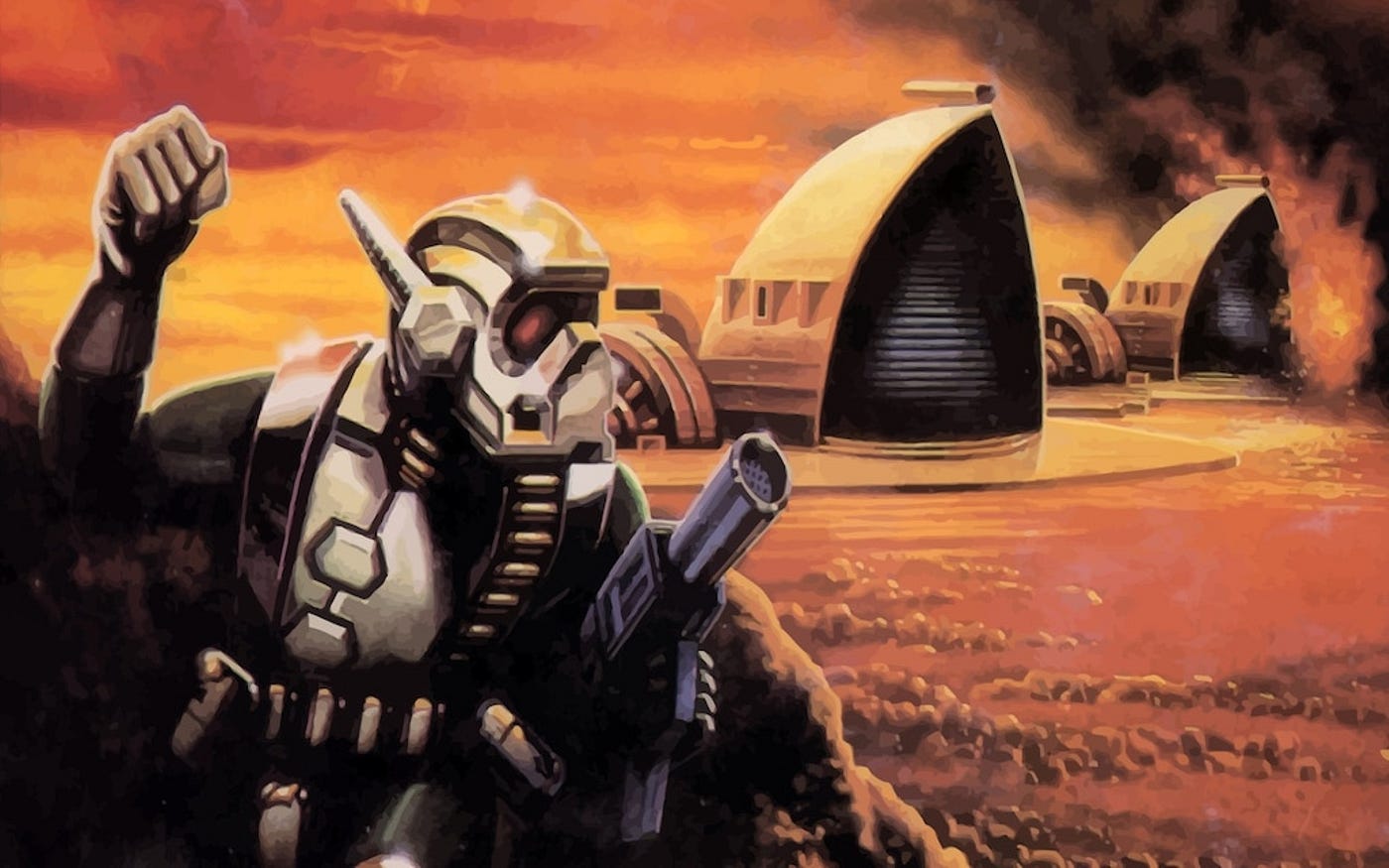I Played This 1992 Dune Game So You Don’t Have To
Dune II: The grandfather of real-time strategy

The Dune saga’s arduous hunt for spice in the midst of a planet of sand has yet to lose its luster. From its inception in 1965, the sci-fi novel’s intriguing setting and arresting plot set the stage for countless adaptations, from video games to miniseries. And with a star-studded cast all set for its latest big-screen adaptation, the endearing franchise is gearing up to reach an audience who didn’t grow up with Dune novels and merchandise. While I haven’t had the good fortune of delving into the intricate lore behind the world of Arrakis, I burrowed my way in through another route.
Dune II: The Building of a Dynasty.
While it is by no means the first real-time strategy game out there, Dune II set the ball rolling with cogs in the machine that still shine in games today. It’s a shining adaptation of its subject matter, with all its elements nodding towards things that were already present in the original novel.
The ritual of setting up camp and assimilating resources before sending an army towards your foe was one deeply rooted in Dune II’s core design. Mechanics and ideas that are commonplace today came together in 1992 to form a game that spawned a genre by itself. It’s absurd how much of the game has been lifted and placed into the beating hearts of RTS games today. It helped define the RTS genre well into the next millennium. All it did was put a clock into a genre straddled with turn-based shenanigans.
No offense, Civilization.

Paving the way
You can see why anyone would have second thoughts on playing something that looks like a mess of pixels with a daunting control scheme. The little box on the right with movement options does little to divert said worry. And don’t let the II in the name fool you: the first entry was an adventure game. Nonetheless, the veins beneath most flag bearers of the RTS genre come into full focus here. Sure, it looks like your regular space-faring strategy outing at first. A few seconds in, minarets of dust make way for a striking revelation.
Right off the bat, changing things to run in real-time lent the game a sense of pacing that its predecessors simply could not capture. While 1991’s Civilization let you spend agonizing minutes on decisions, Dune II demanded split-second reflexes a year later. In a genre that used to give you all the time in the world, the move made its precursors look ridiculous.
Spice substituted the wood and ore found in today’s games, collected by harvesters at the risk of drawing the ire of Arrakis’ colossal sandworms. Limited supply meant that you couldn’t just hole up in one spot and hope for the best. Bases always felt like a temporary measure in Dune II. Contending with the harsh sandstorms of the planet encased in sand was no mean feat either. Laying down a pavement of sorts before building structures was a tedious exercise. It also meant that you couldn’t go about dropping buildings around like a futuristic Bob the Builder.

Pre-multiplayer
Yes, Dune II was made in a time when it was okay to not have a multiplayer component. Mostly because back in 1992, multiplayer meant handing your controller over to a friend. Speaking of the narrative, Dune II let you pick one from three houses. Each came with their own distinct race-specific units and custom cutscenes featuring a unique mentor figure. The good-willed Atreides possessed Sonic Tanks, the ruthless Harkonnen had Devastators and the non-canon but enterprising Ordos worked with devious Saboteurs. While the paper-thin narrative loosely set in Frank Herbert’s Dune universe won’t win any storytelling awards, it kept things chugging along at a good pace.
It even had a decent twist.
Dune II set ideas in motion that would bear fruit in the battlegrounds of its successors. The campaign fed players a detailed tech tree one drop at a time to keep things from going stale. Things like multiple unit types with unique weapons and abilities, a mix of ground and air units, and hero units were things that were unheard of at the time. Sandworms acted as forces of nature that could shift the tide in a battlefield by threatening all the factions on the board. Smaller non-playable factions assisting you with bonuses and units owe their heritage to the Atreides teaming up with the Fremen to beat the Harkonnen.
The best part? All of these ideas are rooted in the lore of the original novel.
It’s shocking to see rudimentary versions of ideas that we now take for granted. While the graphics won’t blow your socks off, the charm embodied by the armies of blurry pixels was truly impressive for its time. It let your mind fill in the gaps present in the chinks of Dune II’s pixelated armor plating. A well-composed soundtrack in tandem with audio cues from unit commands and enemy engagements set the tone for the future, one where consecutive split-second decisions could make or break a game.
But not all was well in Arrakis.

Forgivable flaws
I grappled with the controls in vain, a facet that the RTS pioneer struggled with. When Age of Empires and StarCraft let you pick dozens of units at once and right-click to go about business, Dune II’s painful scheme was far from simple. The arduous “select unit, select command, select target” cycle made my life miserable.
Adding insult to injury is that the game only lets you deal with a single unit at a time. The lack of a grouping feature in a game that expected you to juggle an army alongside a base was downright infuriating. Which is why this retrospective does you a solid. In my opinion, it’s a history lesson that’s better off gleaned from a review. Fair enough, I’m rambling about a game that used to run on computers with 4 megabytes of RAM in 1992. But if you still want a dose of nostalgia and see where it all began during a lunch break, plenty of faithful ports exist. I did warn you.
Sadly, licensing woes mean that Dune 3 won’t see the light of day. Shifting gears, the development team decided to refine their vision as Westwood began to work on C&C: Tiberian Dawn. The rest is history. What made Dune II fun: its pacing, its building, and its battles, paved the way for more of the same. And some much-needed refinements.

I’ll never forget enemy soldiers squealing as my tanks ran over them. Those injured and lucky enough to avoid tank treads crawled as they were consumed by Arrakis’ eerie shifting dunes. Explosions left permanent craters, akin to future Command & Conquer titles. It’s almost surprising how Westwood managed to stuff so much into a game where a handful of pixels denotes a building. Sprawling franchises like Total War, WarCraft, and Age of Empires stand on a template of tenets and pillars erected back in 1992. Their strands of DNA were concocted by a game with immeasurable potential.
By a game not entirely lost to the sands of Arrakis.
